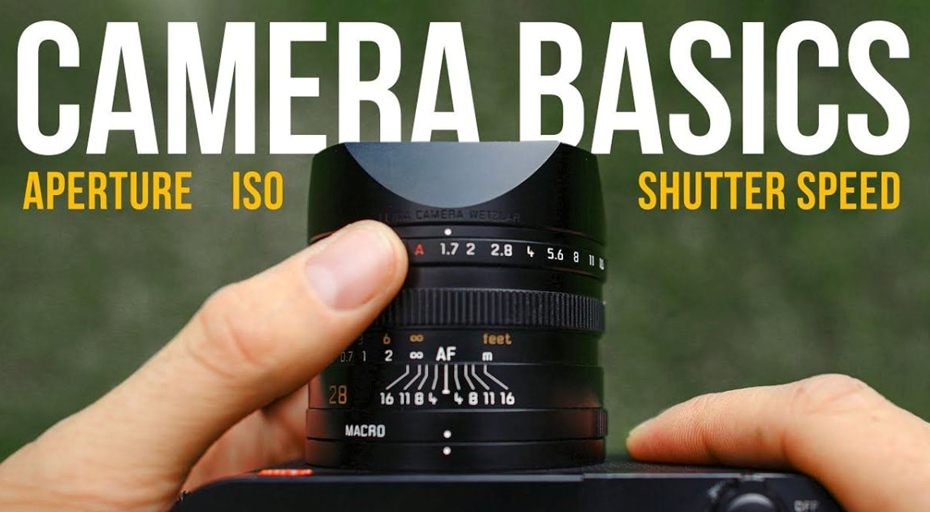ISO, shutter speed and aperture are key elements of photography. ISO controls light sensitivity shutter speed affects motion blur and aperture determines depth of field. Understanding these basics helps beginners create better photos.
Unlock the secrets of stunning photos with ISO, shutter speed and aperture. “Ready to take your photography to the next level?” Master these three essentials and watch your images transform. Discover how small adjustments can make a big difference in your shots.
The Beginner Guide to ISO, Shutter Speed and Aperture explains fundamental camera settings. It teaches how to control light, motion and depth in photos. This guide helps newcomers improve their photography skills quickly.
Here are some tips and guides
There are some important tips and guides as follows:
These tips and guides can solve many of your problems. Read it, it will be very useful for you.
• Practice regularly with your camera.
• Learn to use natural light effectively.
• Experiment with different composition techniques.
• Study the work of photographers you admire.
The Exposure Triangle
The Exposure Triangle is a fundamental concept in photography that connects ISO, shutter speed and aperture. These three elements work together to control the amount of light in a photo. Adjusting one element affects the others allowing photographers to balance exposure. Understanding this relationship is crucial for creating well exposed images.

Mastering the Exposure Triangle gives photographers creative control over their shots. ISO affects image noise and sensitivity to light. Shutter speed controls motion blur and freezing action. Aperture determines depth of field and background blur. By manipulating these settings photographers can achieve their desired artistic effects in various lighting conditions.
What is ISO?

ISO in photography refers to the camera sensor sensitivity to light. Higher ISO values increase light sensitivity useful in low light conditions. Lower ISO settings produce cleaner images with less digital noise. Photographers adjust ISO to balance image quality and light requirements.
• Measures light sensitivity.
• Higher ISO for low light.
• Lower ISO for less noise.
Shutter speed
Shutter speed controls how long your camera sensor is exposed to light. It can freeze fast action or create motion blur in your photos. Faster shutter speeds let in less light while slower speeds allow more light.
Aperture determines how wide the lens opening is when taking a picture. A wider aperture lets in more light and creates a shallower depth of field. A narrower aperture allows less light but keeps more of the image in focus.

ISO measures how sensitive your camera sensor is to light. Higher ISO settings make the sensor more sensitive useful in low light. Lower ISO settings are best for bright conditions. Beginner’s Guide to ISO, Shutter Speeds And Apertures can help you understand these concepts better.
Aperture
Aperture controls the amount of light entering your camera and affects depth of field. A wide aperture (low f-number) lets in more light and creates a shallow depth of field ideal for portraits. A narrow aperture (high f-number) allows less light and increases depth of field perfect for landscapes.
Changing aperture also impacts exposure and sharpness. Wider apertures can lead to brighter images and may require faster shutter speeds. Narrower apertures often result in sharper overall images but may need slower shutter speeds or higher ISO in low light.
| Aperture | F-stop | Light | Depth of Field | Best Use |
| Wide | f/1.8 | More | Shallow | Portraits |
| Medium | f/5.6 | Medium | Moderate | General |
| Narrow | f/16 | Less | Deep | Landscape |
Shutter speed and aperture combinations
Shutter speed and aperture work together to control exposure. Fast shutter speeds pair well with wide apertures. This combination freezes action and creates a blurred background.
Slow shutter speeds match nicely with narrow apertures. This setup is great for landscape shots. It keeps everything in focus and can create smooth water effects.
For standard shots use medium shutter speeds and apertures. This balanced approach works well in many situations. It provides good exposure and depth of field for everyday photos.
Frequently Asked Questions
What are the 3 most important parts of a camera?
The three most important parts of a camera are the lens, sensor and processor. These components work together to capture light, convert it into digital information and create the final image.
What is the importance of ISO aperture and shutter speed?
ISO, aperture and shutter speed control light and exposure in photos. They affect image brightness depth of field and motion blur allowing photographers to capture scenes accurately.
What are the 3 parts of a photograph?
A photograph has three parts subject foreground and background. The subject is the main focus while foreground and background add depth.
Conclusion
The three most important parts of a camera are the aperture shutter speed and ISO. These elements work together to control exposure and create the final image. Understanding how to adjust these settings allows you to take better photos in various conditions. Beginner’s Guide to ISO Shutter Speeds and Apertures can help you learn more about these crucial components.
Mastering these three elements gives you creative control over your photography. Aperture affects depth of field shutter speed controls motion blur and ISO determines light sensitivity. By balancing these settings you can capture the perfect shot in any situation. Practice adjusting these settings to improve your photography skills.
